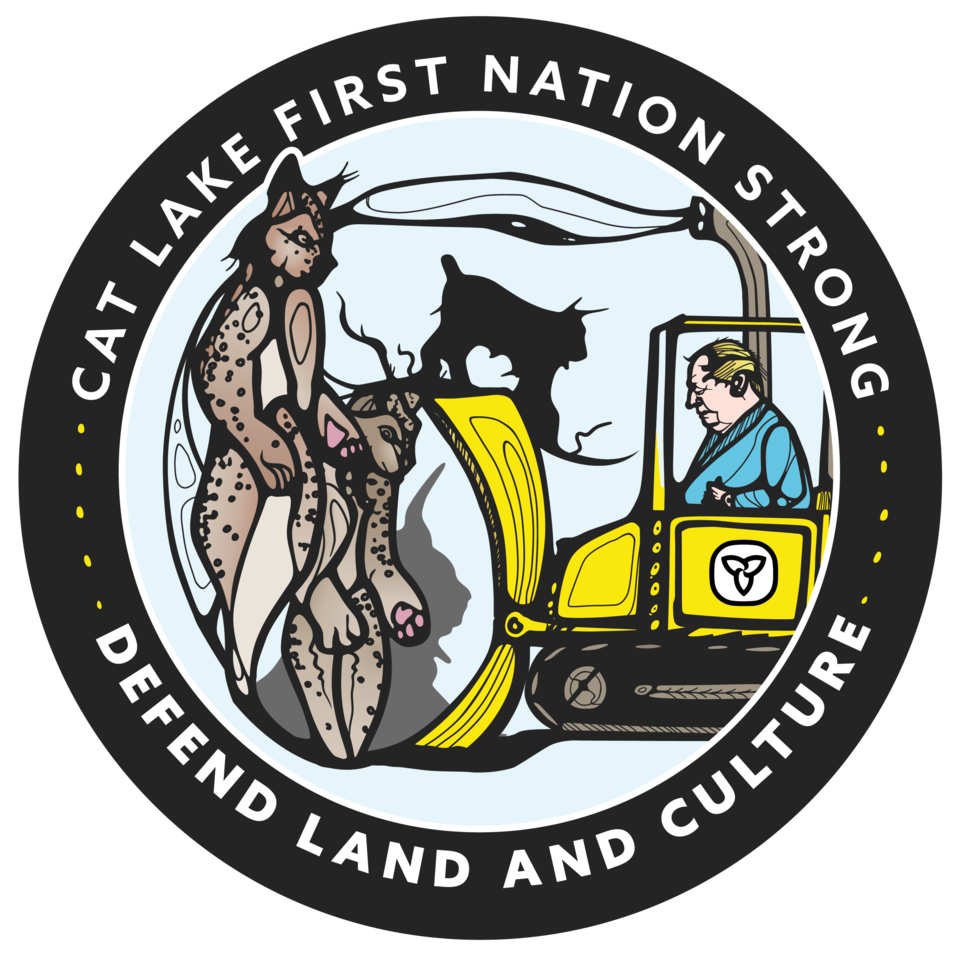CAT LAKE FIRST NATION – Asked if permitting and environmental assessment are tilted in the mining sector’s favour, Cat Lake Chief Russell Wesley let out a big laugh.
“Tilted isn’t even a good description,” he said Thursday in a phone interview from his fly-in First Nation approximately 180 km northwest of Sioux Lookout.
“It’s more like a tornado – that would be the more apt description for how the system is favoured for industry,” he said.
“And, you know, it doesn’t matter whether there are environmental or people’s concerns around the specific projects. The bottom line is the money that goes into the premier’s wallet, and that’s really all it is.”
Wesley made a splash at November’s Chiefs of Ontario conference in Toronto when he sported a pin making fun of Premier Doug Ford’s 2018 pledge that he personally would “hop on a bulldozer” if that’s what it takes to get a mining road built.
Minister of Indigenous Affairs and Northern Development Greg Rickford, the MPP for Kenora-Rainy River, was presented with an identical pin that week.
Wesley is concerned over the province’s support for a First Mining Gold Corporation project on traditional Cat Lake land next to lake trout waters and in a treasured trapping and hunting area, but he said there are broader issues as well.
Mining and exploration companies have too much power, and First Nation communities have little to no say in the process, he said.
Under the current system, he said, the government gives the green light for companies to move forward and then gives host First Nations little time to respond.
Having essentially handed the controls to industry, he said, the government is “just going to sit back and collect their money.”
The province’s Environmental Assessment Act and Mining Act impose “specific timelines” that are onerous for a small First Nation government such as Cat Lake’s to act within, said Wesley.
They are usually given a few weeks to respond to highly technical documents, he said.
“What happens with a First Nation like mine is, we don’t have capacity funding,” he said, referring to funding for the expertise required for a detailed response.
“I don’t have a dedicated mineral specialist or a resource development specialist that’s funded to deal with permits.”
And sometimes many permit notices come in at once, he added.
He recalled how, while his community was dealing with the threat of COVID-19, he received “30 to 40 emails on a Sunday from (the Ministry of Mines) minerals division."
He responded to a couple of those missives, he said, “and that would be my input into the mining process because I didn’t have time.”
“I don’t have a staff person to go through all the emails that we get on the weekend,” said Wesley. “And this is what I’ve told Rickford.”
Capacity funding for those much-needed experts would help fix the situation, Wesley said.
Also, part of the solution is giving First Nations and other people enough time to craft responses, he said.
And, said Wesley, the government must show more respect for treaty promises and the duty to consult.
Ford has made no public statements about the Cat Lake pin, which bears the words “Cat Lake First Nation Strong. Defend Land and Culture.”
But Wesley said the government did send Cat Lake “a Christmas present”: a five-year permit for a winter road for First Mining, issued despite all that Wesley and Cat Lake council have said about the need for more consultation.
